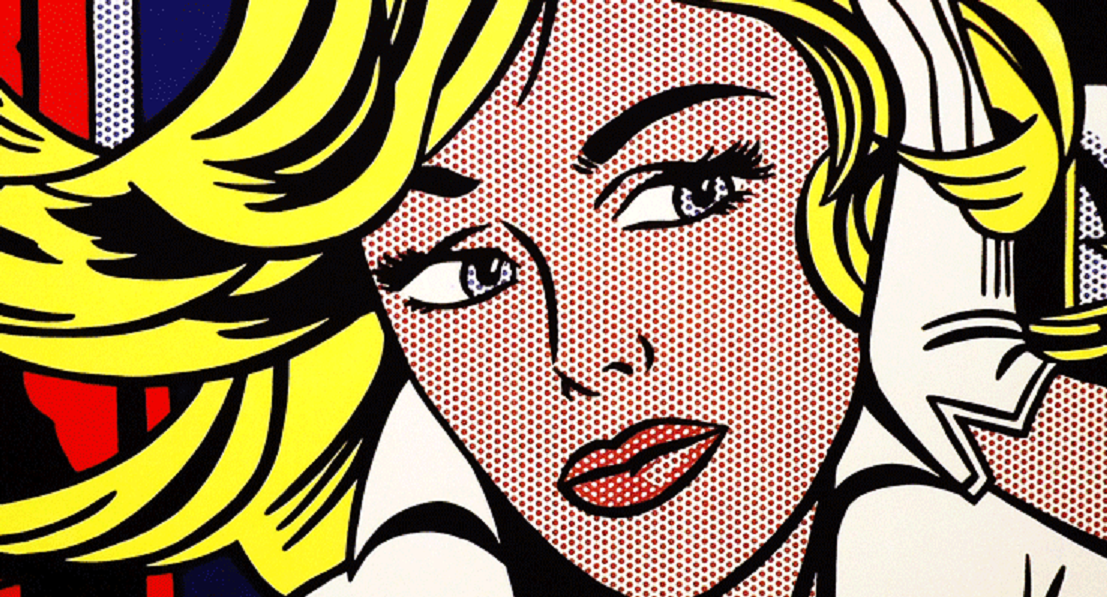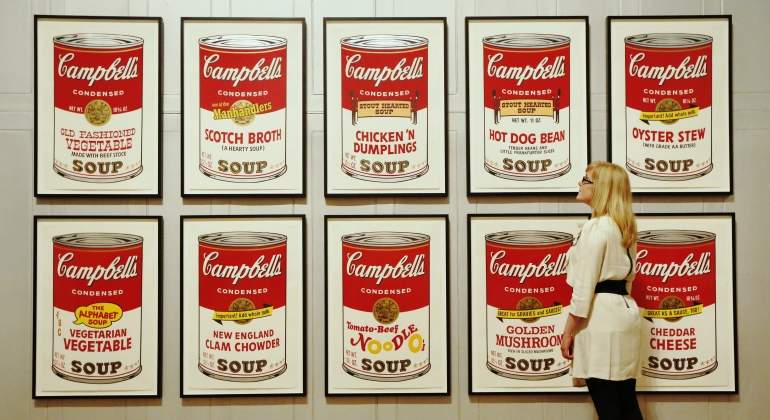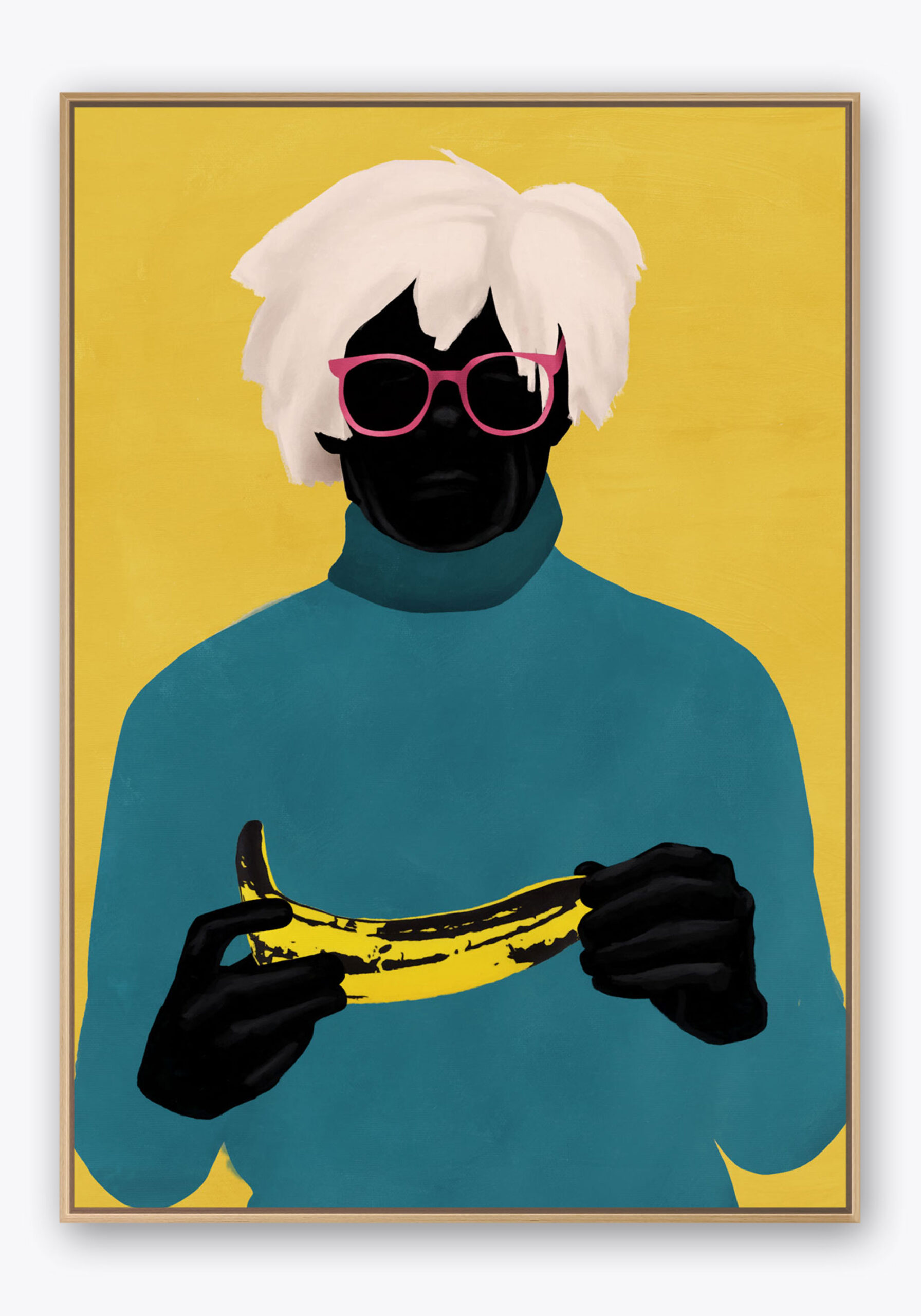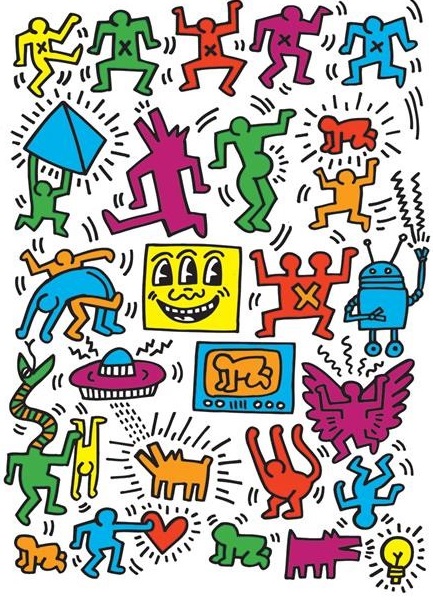
15 Oct What is the Pop Art Movement?

Pop art is a movement that has swiftly become one of the most famous, disruptive, and well-regarded art movements known around the world. Some pop art artists have become household names, with their images and iconography being staples of Western culture.
Compared to some forms of art, pop art may be considered quite accessible, using bold imagery using common cultural touchstones to invoke the artists’ intent in the viewer. However, that isn’t to say pop art is a movement that is shallow. There are many different pop art styles, artists, and ways to define it as a movement and as a medium.
THE DEFINITION OF POP ART
Pop art emerged as a separate movement in the 1950s, first in Britain and then in America. Though it may have begun during that decade it has become synonymous with the 1960s, with many of its proponents and artists producing their most famous works during this period. The movement began as a revolt against constrictions on what could and could not be considered ‘art’. Many young artists felt that the art world had become staid and insular, looking inwards and focusing on traditional methods of producing art. The art they saw in museums or during their education had little in common with their lives or the lives of people in the 1950s. Instead, they turned to popular culture for inspiration, to comic books, films, products, music, and advertising.
Richard Hamilton, a pop artist, wrote in 1957 of his definition of pop art in a letter to his friends:
“Pop Art is: Popular (designed for a mass audience), Transient (short-term solution), Expendable (easily forgotten), Low cost, Mass produced, Young (aimed at youth), Witty, Sexy, Gimmicky, Glamorous, Big business”
Pop art’s emergence caused shockwaves both through the art world and popular culture. Many critics did not receive pop art kindly because it acted as a reflection of popular culture. Some art critics felt that it was ‘lowbrow’ or uncritical of culture, however, this criticism overlooked many of the themes of pop art which helped pave the way for postmodernism as a movement.
Transatlantic Pop Art Movements
Though pop art arose both in the UK and in the USA and used the same popular culture materials as inspiration, the two movements are considered distinct from each other in several key ways. In the UK, pop art started with a collection of artists known as the Independent Group. They would meet, along with architects, critics, and writers, to discuss art and challenge preconceptions. This led to the UK pop art movement being more critical of popular culture, whilst the movement did take pop culture as its inspiration it was more academic in focus. Works created in the UK would use satire and irony to speak to the viewer of what American popular imagery represented, looking at the power it holds over people’s lives.
In the United States, however, pop art was seen more like a return to representational art, focusing on reproducing the world or the image in a more recognisable way. This followed abstract expressionism and may be seen as a reaction to that particular movement. In addition, US pop art tends to focus on impersonal imagery, using popular culture to de-emphasise personal feelings or symbolism which characterised the earlier artistic movements.

The Artists of Pop Art
Though many took part in the pop art movement, there are four key names to consider when looking at pop art artists.
Andy Warhol
Andy Warhol isn’t just one of the most famous pop art artists, he is now counted amongst the most famous artists of all time. His recognisable appearance has been parodied across popular culture, making him a cultural touchstone in his own right.
Known as the Pope of Pop, Andy Warhol integrated commercial aspects into his paintings which initially caused offence that rippled throughout the art world. The controversy over his paintings, their mundane subject matters, and their non-traditional styles helped make him a household name in America and beyond.
Many of Andy Warhol’s paintings have sold for record-breaking amounts at auction, with some breaking the $100 million barrier.
Roy Lichtenstein
Initially working in cubism and abstract expressionism before moving to pop art, Roy Lichtenstein swiftly became one of the most famous names in the movement. His art often focuses on comic book panels, blown up to huge proportions to examine a singular face or image from the scene.
No stranger to controversy, these artworks received severe criticism with articles such as ‘Is He The Worst Artist in the U.S.?’ being published in magazines such as Life. Over time, however, this criticism has faded, leaving him as one of the most renowned artists of the pop art movement.
Keith Haring
Keith Haring made his name working as a graffiti artist throughout New York, becoming deeply embedded in that scene as he produced thousands of public drawings. Eventually, he opened his Pop Shop, which aimed to make art accessible to the public by offering it at reasonable prices.
Many influential pop art pieces were created by Keith Haring, working on products such as Lucky Strike cigarettes, Coca-Cola, and Absolut Vodka. He managed to marry low art and high art, made art accessible to the general public, and was able to convey complex messages through simple, bold artworks.
David Hockney
David Hockney is a British artist who emerged as one of the most prominent figures of the pop art movement, with his 1967 painting ‘A Bigger Splash’ being considered one of the foremost pop art artworks.
His most famous works often depict the bright azure skies and waters of his adopted hometown of Los Angeles, with swimming pools and Californian landscapes being key components of many of his artworks. In recent times he has been considered one of the most influential British artists of all time and even turned down a knighthood offered by the Queen.

The Styles of Pop Art
In a direct parallel with its subject matter, many pop art styles utilise mechanical or commercial techniques. These can range from silk-screening or screen printing, a style often associated with printing iconography on garments, to collage, where images are layered onto a surface to create a larger image.
Many pop art styles also use mixed media, a style that shares some similarities with collage, using many images or objects to create a larger piece of art. This particular style breaks free from canvas or traditional methods of creating art, using wood, metal, or other objects as backgrounds.
In terms of the characteristics of pop art styles, most pop art will contain many of the following themes and styles:
- Recognisable imagery: Pop art uses iconography from popular culture, meaning many of the images will be of familiar scenes, items, or products. The most famous of these is a simple tin of soup, though even photographs of celebrities have been used in pop art artworks.
- Bright colours: Vibrancy is a key component of many pop art artworks, with red, yellow, and blue being used to great effect.
- Irony or satire: Humour is wielded by pop artists to criticise or pillory popular culture. Pop artists poke fun at current events or popular culture at large through their works.
- Innovative techniques: Many pop artists use non-traditional techniques when creating their art, using methods outside those taught in many art schools of the time. This exploration of non-traditional art styles helped break down the barriers between the public and pop art, as well as muddied the waters between low and high art.

Discover Pop Art with PICTOCLUB
Learn more about pop art by immersing yourself in PICTOCLUB’s wide collection of pop art artworks for sale and bring some colour into your life.

